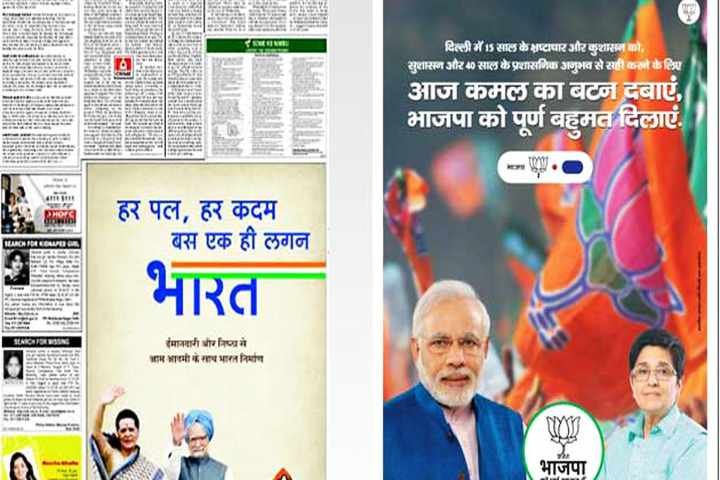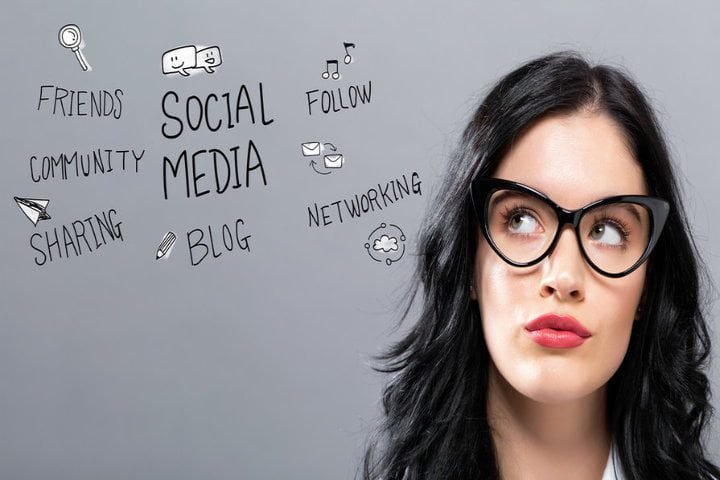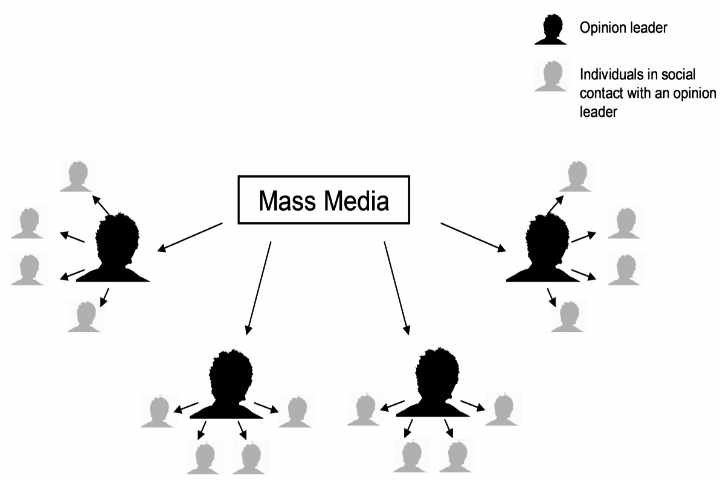Two-Step Flow Theory
The Two-Step Flow Theory is a significant model in mass communication theories that questions previous ideas about direct media effects. In the 1940s, Paul Lazarsfeld, Bernard Berelson, and Hazel Gaudet created it based on their research on voter behavior during the 1940 U.S. presidential election.
In This Article
UGC-NET aspirants in mass communication and journalism must learn this theory, as it sheds light on disseminating information and influencing society.
The Two-Step Flow Theory posits that ideas flow from mass media to opinion leaders and from these leaders to a wider population. This model marked a significant shift from previous theories that assumed mass media had direct, immediate effects on audience behavior. This exploration will thoroughly analyze the Two-Step Flow Theory, including its components, applications, strengths, limitations, and relevance in the Indian media context.
Key Components of the Two-Step Flow Theory
1. Mass Media
2. Opinion Leaders
3. Less Active Sections of the Population
4. Interpersonal Influence
5. Two-Step Process
Let’s examine each of these components in detail:
Mass Media
In this theory, mass media are the initial sources of information. They include traditional forms like newspapers, radio, television, and modern digital platforms.
For instance, in the Indian context, major news channels like NDTV, Aaj Tak, or Republic TV serve as mass media sources.
Opinion Leaders

Opinion leaders are individuals who pay close attention to mass media, interpret the content, and pass on their interpretations to others. They are often respected community members and seen as knowledgeable and trustworthy.
In a village setting, a school teacher or a local panchayat leader might serve as an opinion leader, interpreting news and government policies for others in the community.
Less Active Sections of the Population
These are individuals who have less direct exposure to media and rely more on opinion leaders for information and interpretation.
In rural India, where media access might be limited, many villagers might depend on more educated or connected individuals for information about national events or government schemes.
Interpersonal Influence
The theory emphasizes the importance of face-to-face interactions in shaping opinions and behaviors. It implies that interpersonal relationships are more likely to influence people than direct exposure to mass media.
During election times, discussions in local tea shops or community gatherings often significantly shape political opinions.
Two-Step Process
The theory describes a two-step process of information flow:
Step 1: Information moves from mass media to opinion leaders
Step 2: Opinion leaders pass on their interpretations to their followers
When the government announces a new policy like ‘Ayushman Bharat‘ for health care, news reaches opinion leaders through the media, who then explain its implications to others in their social circles.
Applications of the Two-Step Flow Theory
Let’s explore how the Two-Step Flow Theory can be applied to various scenarios in the Indian context:

Political Campaigns
Consider a state election campaign:
- Mass Media: News channels and newspapers cover party manifestos and candidate speeches
- Opinion Leaders: Local party workers and community leaders interpret these for their neighborhoods
- Less Active Population: Voters who don’t directly follow news rely on these local leaders for information
- Interpersonal Influence: Discussions at workplaces and social gatherings shape voting decisions
- Two-Step Process: Information flows from media to local leaders, then to the general public
Health Awareness Campaigns
Let’s apply the theory to a COVID-19 vaccination drive:
- Mass Media: Government advertisements on TV and radio about vaccine safety and efficacy
- Opinion Leaders: Local doctors, health workers, and educated individuals in the community
- Less Active Population: People with limited media access or health literacy
- Interpersonal Influence: Community meetings and door-to-door campaigns by health workers
- Two-Step Process: Information moves from health ministry to local health workers, then to the public
- 3. Consumer Behavior
Launch of a new smartphone
- Mass Media: Tech reviews in newspapers and online platforms
- Opinion Leaders: Tech-savvy individuals in social groups
- Less Active Population: Less tech-oriented consumers
- Interpersonal Influence: Recommendations from friends and family
- Two-Step Process: Information flows from tech media to tech enthusiasts, then to general consumers
Strengths of the Two-Step Flow Theory

1. Acknowledges Social Context: It recognizes the role of social relationships in information dissemination and opinion formation.
2. Explains Limited Media Effects: The theory helps explain why some mass media campaigns may have limited direct effects on audience behavior.
3. Highlights Opinion Leaders: It emphasizes the crucial role of influential individuals in communities.
4. Applicable to Various Contexts: The theory can be applied to diverse scenarios, from political campaigns to product marketing.
Limitations of the Two-Step Flow Theory
1. Oversimplification: The theory may oversimplify the complex process of information flow in society.
2. Ignores Direct Media Effects: It might underestimate the direct impact of mass media on some individuals.
3. Changing Media Landscape: The theory was developed before the advent of social media and may not fully account for modern communication patterns.
4. Difficulty in Identifying Opinion Leaders: In some contexts, it may be challenging to clearly identify who the opinion leaders are.
The Two-Step Flow Theory in the Digital Age
While the Two-Step Flow Theory was developed in the era of traditional mass media, it remains relevant in the digital age, albeit with some modifications:
1. Multiple Steps: In the age of social media, information often flows through multiple steps rather than just two.
2. Blurred Lines: The distinction between opinion leaders and followers is less clear, as social media allows everyone to potentially be an influencer.
3. Faster Flow: Digital platforms enable much faster information dissemination than traditional media.
4. Echo Chambers: Social media algorithms can create echo chambers, reinforcing the role of like-minded opinion leaders.
Case Study: Social Media Influencers in India

Let’s apply the Two-Step Flow Theory to the phenomenon of social media influencers in India. In today’s world, YouTube influencers have a similar role. Following the general election results of 2024, various reports suggest the impact of Dhruv Rathee’s videos on the BJP’s seat losses, with around 250 million views and 6 to 7 million new subscribers during the election period.
- Mass Media: Social media platforms like Instagram and YouTube
- Opinion Leaders: Popular influencers in various niches (fashion, tech, lifestyle, politics)
- Less Active Population: Followers who rely on these influencers for product recommendations and lifestyle advice
- Interpersonal Influence: Followers share influencer content with friends and family
- Two-Step Process: Information flows from brands to influencers, then to their followers
This case demonstrates how the Two-Step Flow Theory can be adapted to analyze modern digital communication processes.
Criticism and Evolution
While the Two-Step Flow Theory has been influential, it has faced criticism for potentially oversimplifying the communication process. Critics argue that it doesn’t account for the possibility of multiple steps in information flow or the direct effects of media on some individuals.
More complex models have been developed in response to these criticisms, such as the Multi-Step Flow Theory, which suggests that information can flow through multiple opinion leaders before reaching the wider population.
Despite these criticisms, the Two-Step Flow Theory remains valuable for its emphasis on interpersonal communication and social influence in the spread of information and ideas.
Two-Step Flow Theory and Media Literacy

The Two-Step Flow Theory offers important insights for media literacy:
1. Critical Thinking: It encourages individuals to consider their information sources and opinions.
2. Influence Awareness: The theory promotes awareness of how social influences shape our views and behaviors.
3. Active Audience: It portrays audience members as active participants in the communication process, not just passive receivers.
Understanding the two-step flow theory can enhance media literacy efforts in India, where social structures often play a significant role in information dissemination.
Conclusion
The Two-Step Flow Theory of Communication, originating in mid-20th-century America, is a relevant and insightful model for understanding information flow in society. Understanding this theory will help us understand how media messages are disseminated and interpreted in different social contexts.
As we’ve seen, the theory can be applied to diverse scenarios in the Indian context, from political campaigns to health awareness drives to consumer behavior. While it has limitations, particularly in fully capturing the complexities of modern digital communication, it provides a valuable framework for analyzing the role of interpersonal influence in spreading information and ideas.
Amidst the overwhelming amount of information and the influence of social media bubbles, the Two-Step Flow Theory’s focus on opinion leaders and interpersonal communication remains relevant. It is important to remember that personal relationships and community influences still significantly impact shaping opinions and behaviors, even with abundant mass media channels.
UGC NET Preparation Tips
1. Understand the historical context in which the Two-Step Flow Theory was developed.
2. Be able to explain the two steps in the information flow process.
3. Practice applying the theory to various communication scenarios in India.
4. Understand both the strengths and limitations of the theory.
5. Consider how modern digital communication might adapt or challenge the theory.





